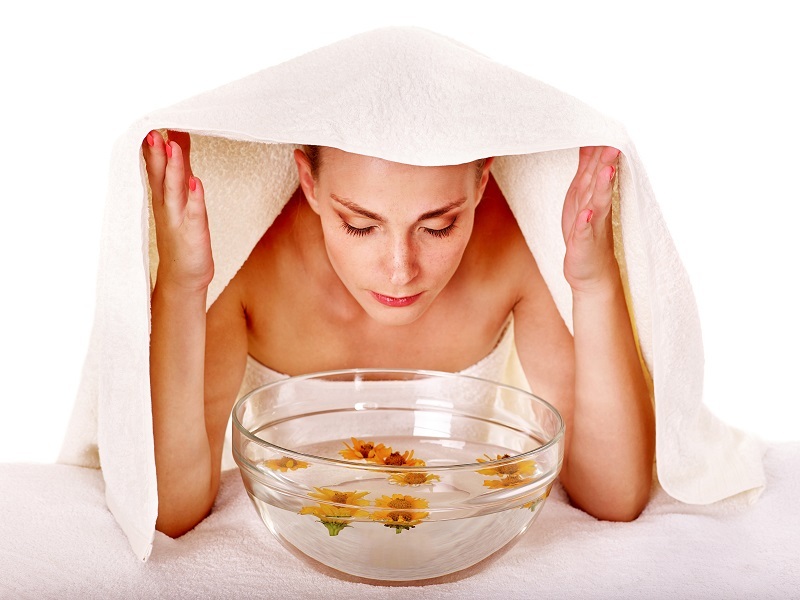Unlocking the Secrets to Thriving Hydrangeas
Posted on 22/08/2025
Unlocking the Secrets to Thriving Hydrangeas
Hydrangeas are beloved by gardeners worldwide for their lush, dramatic blooms and enduring beauty. With a rainbow of colors and unique flower shapes, these shrubs create stunning displays from early summer to fall. Whether you are a seasoned horticulturist or a gardening beginner, understanding the secrets to growing thriving hydrangeas can turn your garden into a spectacular floral paradise. This comprehensive guide explores everything you need to know about caring for hydrangeas and ensuring they thrive year after year.

Understanding Hydrangea Varieties
The first step in unlocking the secrets to vibrant hydrangeas is recognizing the diversity among hydrangea species. Each type has specific needs and characteristics that influence bloom shape, color, and overall growth.
Popular Hydrangea Types
- Bigleaf Hydrangea (Hydrangea macrophylla): Known for their large, round "mophead" or "lacecap" blooms. Flower color can vary depending on soil pH.
- Peegee or Panicle Hydrangea (Hydrangea paniculata): Features cone-shaped flower clusters, often turning from white to pink as the season progresses.
- Oakleaf Hydrangea (Hydrangea quercifolia): Noted for unique oak-shaped leaves and elongated flower heads. Provides stunning fall foliage color.
- Smooth Hydrangea (Hydrangea arborescens): Bears large, rounded clusters of white or greenish-white flowers; popular for 'Annabelle' variety.
- Climbing Hydrangea (Hydrangea petiolaris): A vigorous vine that climbs structures and walls, with flat-topped flower clusters.
The key to successful hydrangea cultivation is selecting the right type for your climate and garden design. Each hydrangea species boasts different resilience to sunlight, soil conditions, and cold hardiness.
Planting Hydrangeas for Long-Term Success
Choosing the Ideal Location
- Sunlight: While most hydrangeas flourish in partial shade, some sun-loving varieties such as Hydrangea paniculata perform best with four to six hours of direct sunlight.
- Soil Quality: Hydrangeas prefer nutrient-rich, well-draining soils packed with organic matter. Compact, poorly draining soils can stunt growth and bloom production.
- Protection: Provide shelter from strong winds, which can damage fragile blooms and leaves, especially in exposed gardens.
Soil Preparation Tips
For truly show-stopping hydrangeas, soil preparation is vital. Incorporate compost, well-rotted manure, or leaf mold to enrich the planting bed. Test soil pH to determine whether adjustments will help achieve your desired bloom color -- especially for bigleaf hydrangeas. Acidic soils (pH below 6) promote blue flowers, while alkaline soils (pH above 7) lead to pink or red hues.
Tip: If your soil is too heavy, amend with sand or perlite to boost drainage and aeration. Raised beds offer another solution for problematic soils.
Proper Planting Technique
- Dig a hole: Make it twice as wide and as deep as the hydrangea's root ball.
- Loosen the roots: Gently tease out roots before placement to encourage outward growth.
- Position: Place the shrub at the same depth it was in its nursery container.
- Backfill: Fill the hole with amended soil, tamping lightly to reduce air pockets.
- Water: Give your newly planted hydrangea a deep, thorough watering.
The Ultimate Guide to Hydrangea Care
Watering Secrets for Thriving Hydrangeas
Hydration is paramount for robust hydrangeas, especially during their first few seasons. These plants have shallow root systems and require consistent moisture to form lush blooms and healthy foliage.
- Frequency: Water deeply at least once a week; more often during hot, dry spells.
- Technique: Soak the soil at the base rather than overhead to prevent foliar diseases.
- Mulching: Apply a 2-3 inch layer of organic mulch to retain moisture and keep roots cool.
Tip: Brown leaf edges are a sign your hydrangea is too dry. Increase watering during droughts or heat waves.
Fertilizing Tips for Abundant Blooms
Proper feeding can dramatically boost hydrangea flower production. Choose a balanced, slow-release fertilizer or a specialized blend formulated for acid-loving plants.
- Feeding schedule: Apply fertilizer in early spring as new growth emerges.
- Avoid late summer fertilizing: It may encourage soft growth, prone to winter injury.
- Monitor excessive nitrogen: Too much nitrogen produces lush leaves with fewer blossoms.
- Organic options: Compost, fish emulsion, or worm castings provide gentle, sustainable nutrients.
How to Prune Hydrangeas for Maximum Health
Pruning hydrangeas can be a confusing topic, but proper technique is crucial for maintaining plant shape, size, and prolific blooming. The right timing and method depend on your hydrangea species.
- Bigleaf and Oakleaf Hydrangeas: Bloom on "old wood" (stems from the previous year). Only prune after flowering by trimming spent blooms and thinning crowded stems. Avoid autumn or spring pruning to preserve next year's buds.
- Panicle and Smooth Hydrangeas: Flower on "new wood" (current year's growth). Prune hard in late winter or early spring to encourage vigorous new stems and large blossoms.
Unlocking Color Secrets: The Science Behind Hydrangea Blooms
Why Do Hydrangea Colors Change?
Many gardeners are fascinated by the ability to change hydrangea flower color, especially with bigleaf hydrangeas. The magic lies in soil chemistry, specifically the availability of aluminum ions.
- Blue blooms: Soil is acidic (pH 5.2-5.5) and aluminum is available for uptake.
- Pink blooms: Soil is alkaline (pH 6.0-6.2) and aluminum is less available.
Tip: To enhance blue tones, mix aluminum sulfate into the soil. For deeper pinks, add garden lime. Always follow package instructions to avoid damaging your plants.
Other Factors Affecting Hydrangea Color
- Genetic limitations: White-flowered hydrangeas will not change color, regardless of soil amendments.
- Water quality: Hard, alkaline tap water can shift flower color toward pink over time.
- Plant maturity: Young hydrangeas may produce different colors as they mature and settle into their location.
Dealing with Common Hydrangea Problems
Pest and Disease Management
Even the healthiest hydrangeas can face challenges from insects and diseases. Learning to spot problems early is one of the key hydrangea growing tips.
Watch for these common issues:- Aphids: Clusters of green pests feeding on new growth. Rinse with water or treat with insecticidal soap.
- Spider mites: Fine webs under leaves; yellow, stippled foliage. Increase humidity and spray with horticultural oil.
- Powdery mildew: White, powdery patches on leaves. Improve air circulation, avoid overhead watering, and apply fungicide if severe.
- Leaf spots: Brown or black speckling. Remove and dispose of affected foliage. Water early in the day to dry leaves quickly.
Hydrangea Troubleshooting Guide
- No blooms: Improper pruning, late-spring frosts, or insufficient sunlight are likely causes.
- Wilting leaves: Can indicate under- or overwatering, root rot, or extreme heat.
- Yellowing foliage: May signal poor drainage, lack of nutrients, or pests.
- Brown spots/edges: Usually a result of drought stress, harsh sun, or leaf scorch.
Early diagnosis and prompt action can restore your hydrangeas to health and ensure continuous growth and flowering.
Seasonal Care Calendar for Hydrangeas
- Spring: Test soil, apply fertilizer, and prune (if needed, based on type).
- Summer: Water deeply, mulch, and deadhead faded blooms to tidy the shrub.
- Autumn: Reduce watering as days shorten; protect roots with mulch in cold regions.
- Winter: In colder climates, shelter hydrangeas by piling leaves or straw around roots, or wrapping plants with burlap.
Expert Secrets to Propagating Hydrangeas
Grow Your Garden with Hydrangea Cuttings
Hydrangea propagation lets you multiply your favorite varieties and share them with friends. The most popular technique is growing from cuttings:
- Select a healthy shoot: Choose softwood stems in late spring or early summer (green, flexible growth).
- Trim and prepare: Take a 4-6 inch section, remove lower leaves, leave two sets at the top.
- Rooting: Dip stem ends in rooting hormone, insert into moistened potting mix, and cover with plastic to conserve humidity.
- Care: Place in bright, indirect light. Roots should form in 2-4 weeks.
Dividing mature plants or layering branches are alternate methods to expand your hydrangea patch.
Designing the Perfect Hydrangea Border
For a truly spectacular garden, integrate hydrangeas into mixed borders and landscape designs. Combine different hydrangea varieties to enjoy sequential blooms, varied heights, and striking foliage. Underplant with ferns, hostas, astilbes, and other shade-loving perennials for texture and contrast.
- Group hydrangeas in odd numbers for naturalistic, eye-catching clusters.
- Use taller types like panicle or oakleaf hydrangeas as background anchors.
- Feature dwarf hydrangeas in containers or along smaller paths.
- Add companion plants that match hydrangeas' cultural needs - moist, rich soil and dappled shade.

Hydrangea Myths and FAQs
Can I Change My Hydrangea's Color at Will?
It depends on the variety! Only bigleaf hydrangeas (H. macrophylla and some hybrids) can dramatically change color based on soil pH. White-flowered types are not affected.
Why Are My Hydrangeas Not Blooming?
Common reasons include: improper pruning (removing flower buds), too little sun, or frost damage to developing shoots.
Do Hydrangeas Attract Bees and Pollinators?
Yes! Hydrangeas, especially lacecap types, offer nectar and pollen to beneficial insects. They contribute to a thriving, eco-friendly garden.
In Conclusion: The Joy of Thriving Hydrangeas
Growing thriving hydrangeas is both an art and a science. By understanding their needs--from choosing the ideal variety and nurturing soil health to providing proper water, sunshine, and pruning--you can unlock the secrets that yield stunning, long-lasting blooms. With a little planning and consistent care, your garden can showcase the magic of hydrangeas for years to come.
Unlock the full potential of your hydrangeas with these expert tips, and enjoy the endless color, elegance, and life they bring to every garden masterpiece.
Latest Posts
Unlocking the Secrets to Thriving Hydrangeas
Your Ultimate Handbook for Orchid Care Excellence
Which Bloom Aligns with the Essence of Who You Are?
A Guide to the Five Most Sought-After Valentine's Day Flowers





